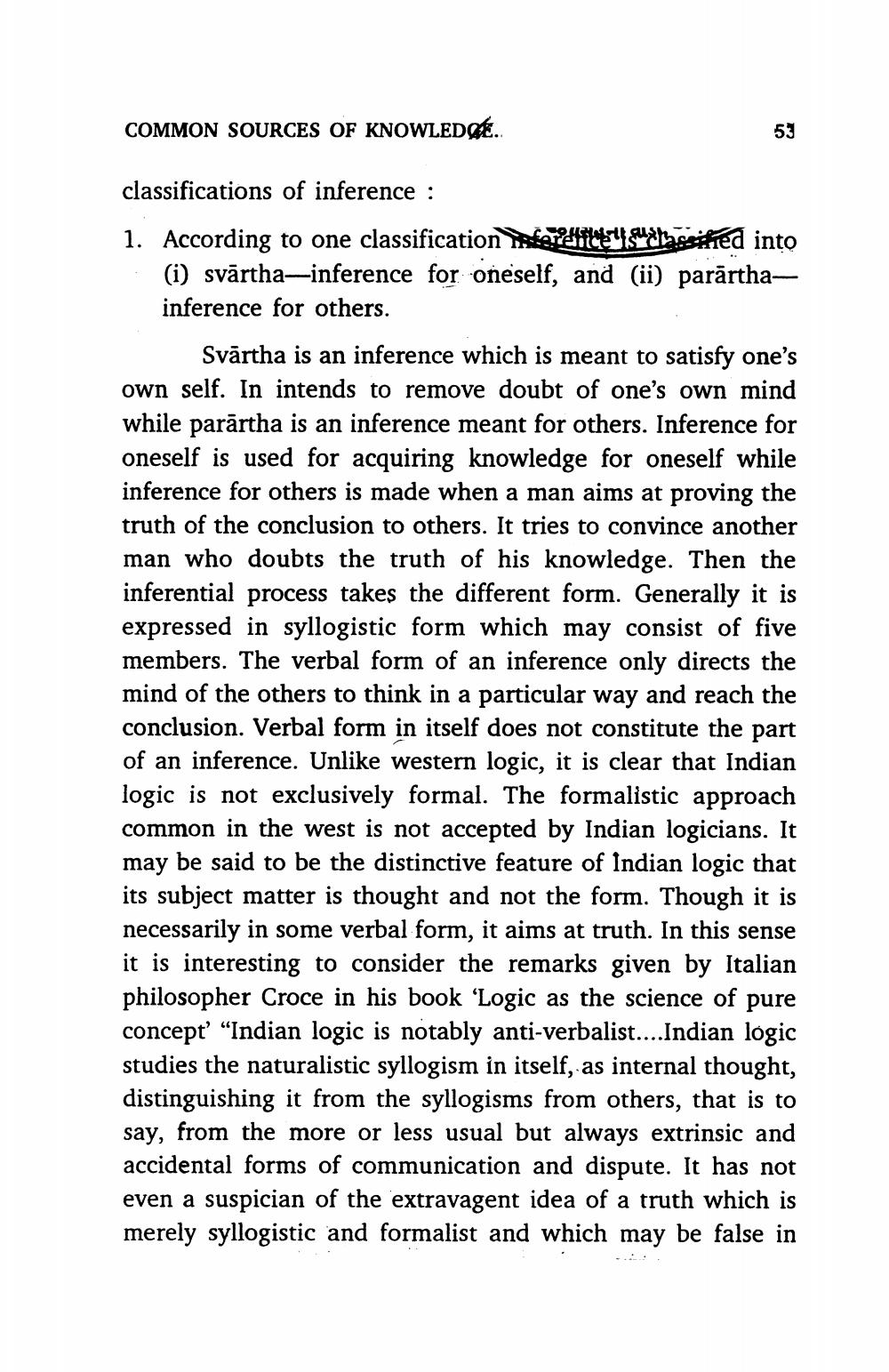________________
COMMON SOURCES OF KNOWLEDGE.
53
classifications of inference : 1. According to one classification template surssified into
(i) svārtha-inference for oneself, and (ii) parārthainference for others.
Svārtha is an inference which is meant to satisfy one's own self. In intends to remove doubt of one's own mind while parārtha is an inference meant for others. Inference for oneself is used for acquiring knowledge for oneself while inference for others is made when a man aims at proving the truth of the conclusion to others. It tries to convince another man who doubts the truth of his knowledge. Then the inferential process takes the different form. Generally it is expressed in syllogistic form which may consist of five members. The verbal form of an inference only directs the mind of the others to think in a particular way and reach the conclusion. Verbal form in itself does not constitute the part of an inference. Unlike western logic, it is clear that Indian logic is not exclusively formal. The formalistic approach common in the west is not accepted by Indian logicians. It may be said to be the distinctive feature of Indian logic that its subject matter is thought and not the form. Though it is necessarily in some verbal form, it aims at truth. In this sense it is interesting to consider the remarks given by Italian philosopher Croce in his book 'Logic as the science of pure concept "Indian logic is notably anti-verbalist....Indian logic studies the naturalistic syllogism in itself, as internal thought, distinguishing it from the syllogisms from others, that is to say, from the more or less usual but always extrinsic and accidental forms of communication and dispute. It has not even a suspician of the extravagent idea of a truth which is merely syllogistic and formalist and which may be false in




